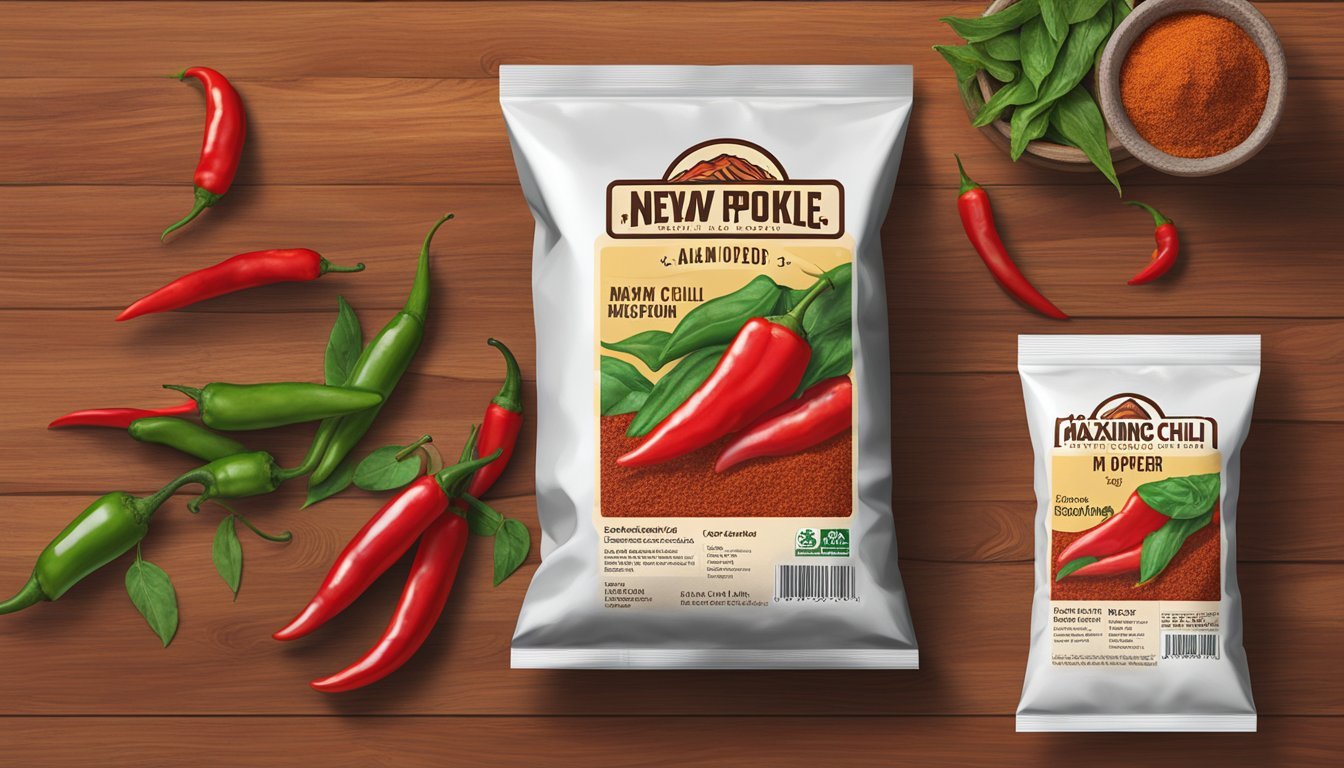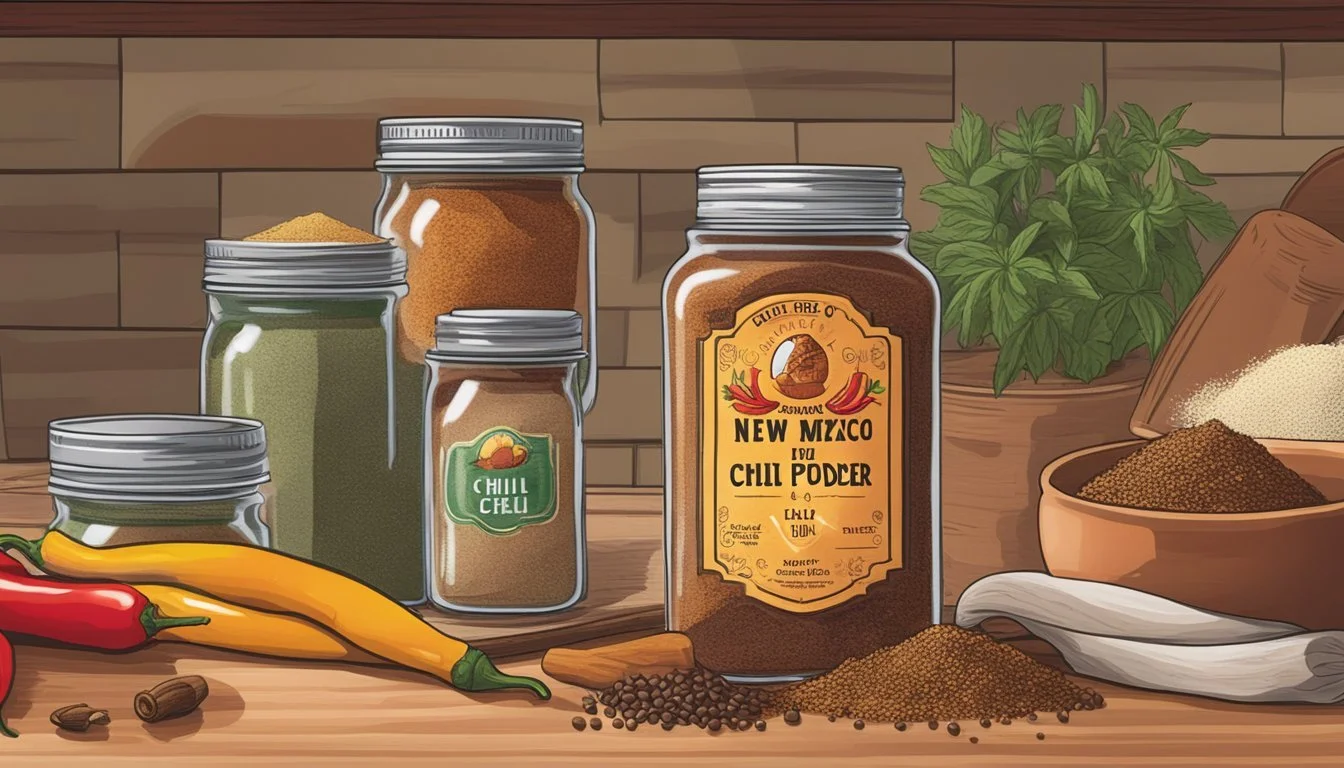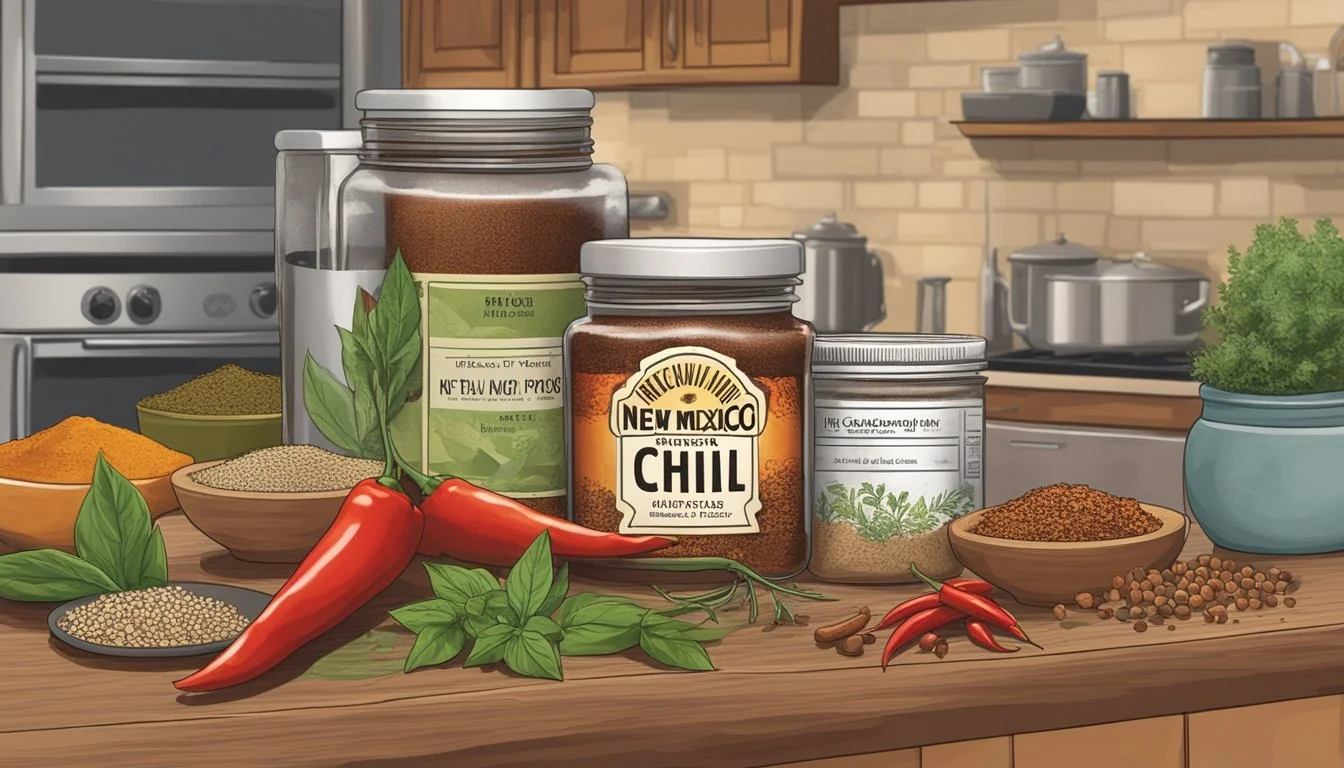Does New Mexico Chili Powder Go Bad?
Shelf Life and Storage Tips
New Mexico chili powder, a staple in Southwestern cuisine, originates from dried New Mexico chili peppers. Known for its medium heat and slightly sweet, smoky flavor, this spice blend plays a crucial role in many dishes. The key to preserving its quality lies in proper storage; when stored correctly, New Mexico chili powder can last up to three years.
Despite its extended shelf life, the potency and aroma of chili powder will start to fade after about six months. This gradual loss in flavor means that while it might still be safe to use, the culinary impact will be diminished. To ensure the best results, it is recommended to use the powder within six months of opening.
Understanding the signs of degradation in chili powder is essential. If there is a noticeable decrease in aroma or if the powder has lost its vibrant color, it should be replaced. This attention to detail in maintaining the spice's quality ensures that each dish prepared using New Mexico chili powder will have the intended flavor and impact.
Understanding Chili Powder
Chili powder is a versatile spice that adds flavor and depth to a variety of dishes. It is commonly used in a wide range of cuisines, especially those known for their bold and spicy flavors.
Composition and Flavor Profile
Chili powder is typically a blend of ground dried chilies along with other spices such as cumin, garlic powder, and oregano. The specific composition can vary, but the key ingredient is always chili peppers. This results in a spice mix that not only brings heat but also layers of complex flavors.
The flavor profile of chili powder can range from smoky and sweet to savory and pungent, depending on the specific peppers and spices used. New Mexico chili powder, for example, is often noted for its medium heat level and slightly sweet, smoky taste. With a Scoville Heat Unit (SHU) of about 1,000 to 2,500, it offers a mild to moderate spiciness suitable for most palates. This makes it a popular choice in Tex-Mex dishes, stews, and chili recipes.
Culinary Uses
Chili powder is an indispensable ingredient in many kitchens, valued for its ability to enhance a dish’s flavor without overwhelming it with heat.
It is frequently used in seasoning blends for meat, adding depth to soups and stews, and enriching the flavor of marinades. Its versatility extends to a wide array of cuisines, from Tex-Mex to Indian and Middle Eastern cooking.
Recipes often incorporate chili powder to achieve a balanced blend of heat and flavor. It can be used to season ground beef for tacos, add a kick to barbecue rubs, or spice up vegetable dishes. The inclusion of other spices within chili powder means it can replace multiple seasonings, simplifying the cooking process.
Chili powder's role as both a flavor booster and a heat source makes it an essential pantry item for anyone who enjoys cooking.
Proper Storage Techniques
Ensuring New Mexico chili powder remains fresh and flavorful involves specific storage methods and conditions. Key factors include maintaining the right environment and selecting appropriate storage locations.
Ideal Storage Conditions
New Mexico chili powder retains its best quality in a cool, dark, and dry place. Humidity and light can degrade the spice's flavor and aroma.
Airtight containers are crucial to keeping air and moisture out. These containers can be made of glass or ceramic, as these materials do not react with the spices. Metal and plastic containers are less ideal as they can impart unwanted flavors over time.
Room temperature is preferred for chili powder storage. It should be kept away from sources of heat, such as stoves or dishwashers, and direct sunlight.
Storage Locations and Their Effects
Choosing the right location in your home can significantly impact the quality of the chili powder. The pantry or a kitchen cupboard offers a dark and stable environment, making them ideal storage spots.
Avoid storing the chili powder on shelves above the stove or near windows, as heat and light will accelerate the loss of flavor.
Refrigerators and freezers are not recommended for storing chili powder due to moisture which can cause clumping. The spice should stay at room temperature, in a controlled environment, to remain potent for longer.
By maintaining optimal conditions, New Mexico chili powder can remain vibrant and flavorful, enhancing your culinary dishes.
Shelf Life and Spoilage Indicators
New Mexico chili powder, like other spices, has a finite shelf life that affects its flavor and aroma. Proper storage is essential to maintaining its freshness and avoiding spoilage.
Recognizing Freshness and Expiration
Fresh New Mexico chili powder boasts a vibrant red color and a strong, aromatic scent. Over time, its color may fade, and its potency can decline. The expiration date, typically around 2-3 years from manufacture, serves as a guideline for peak quality.
To check for freshness, inspect the color and smell the powder. A rich, consistent coloration and a robust aroma signify freshness. If the powder appears dull or lacks scent, it may have passed its prime.
Signs of Spoilage and Degradation
Several indicators point to spoiled or degraded chili powder. Discoloration is a common sign; a shift from vibrant red to a greyish or brownish hue can indicate loss of quality. Additionally, loss of flavor and aroma signals degradation.
Physical signs such as clumping, mold growth, or a rancid smell are more severe indicators of spoilage. Clumping often occurs due to moisture exposure, making the powder unsuitable for use. Any visible mold means the chili powder is not safe to consume.
Preventing Contamination
To preserve New Mexico chili powder, store it in airtight containers, away from light, heat, and moisture. Exposure to air and damp conditions can accelerate spoilage, so it is crucial to keep the container sealed tightly.
Avoid storing the powder near the stove or any place with fluctuating temperatures. Instead, keep it in a cool, dry place. Regularly check for signs of bugs or contamination, as insects can sometimes infiltrate poorly sealed containers.
In summary, maintaining New Mexico chili powder involves vigilance in recognizing deterioration signs and proactive measures to prevent contamination. Proper storage ensures the spice remains a valuable addition to your culinary arsenal.
Maximizing Chili Powder Quality
To ensure the best quality of New Mexico chili powder, focus on effective storage practices, knowing when to replace it, and exploring alternatives to discarding old powder.
Effective Storage Practices
Proper storage is crucial for maintaining the potency and flavor of chili powder over time. Store the chili powder in an airtight container to prevent exposure to moisture and air, which can degrade its quality. Use glass or food-grade plastic containers with tight seals.
Keep the containers in a cool, dark place like a pantry or kitchen cabinet to protect the chili powder from light and heat, which can cause the spice to lose its flavor and color more rapidly.
Dryness is also important; ensure the storage area is dry and free from humidity to maintain the powder's freshness.
When To Replace Chili Powder
Chili powder, including New Mexico chili powder, loses its potency and flavor over time even if stored properly. Annually assessing the quality through a simple taste test can help determine if it needs replacing.
Ground spices typically last 1-3 years before flavor diminishes, though they remain safe to consume beyond this period. If the color has faded significantly or the flavor is weak, it is time to replace the chili powder.
Regularly checking and refreshing your chili powder stock ensures that recipes maintain their intended spice and aroma.
Alternatives to Discarding
When chili powder starts to lose potency, consider alternatives to throwing it away. Use it in stews, soups, or slow-cooked dishes where fresher spices dominate the flavor profile, and the older chili powder can still contribute some flavor without being wasted.
Homemade chili powder can be made by grinding whole spices like oregano, cumin, and garlic along with dried New Mexico chili peppers. This allows for fresh, customized blends and efficient use of older spices.
By employing such strategies, one can maximize the use of chili powder and reduce waste.
Health and Safety Considerations
New Mexico chili powder, like other spices, can lose its potency over time. Storing it properly is essential for preserving its flavor and ensuring its safe use in cooking.
Identifying Health Risks
New Mexico chili powder consists of dried chili peppers, which have natural antimicrobial properties. These properties help prevent the growth of bacteria and mold. However, improper storage can lead to spoilage.
Signs of spoilage include a musty smell, discoloration, or clumping caused by moisture. Spoiled chili powder may harbor mold, which can pose health risks if ingested. To avoid these risks, store chili powder in a cool, dark place away from moisture and heat.
Storing it in an airtight container can also help prolong its shelf-life and maintain its safety.
Nutritional Value and Benefits
New Mexico chili powder is rich in vitamins A and C. These vitamins are known for their antioxidant properties that help combat free radicals in the body. The spice also contains capsaicin, which has been linked to various health benefits.
Capsaicin can stimulate metabolism, improve digestion, and provide relief from pain and inflammation. The dry nature of chili powder ensures that its nutritional value is relatively stable over time, provided it's stored correctly.
Additionally, its antimicrobial properties help maintain its safety and prevent potential spoilage that could affect health. Maintaining the spice's quality involves protecting its volatile oils, which contribute to its flavor and health benefits.
The Science of Spice Degradation
Chili powder, like all spices, undergoes changes that affect its quality over time. Factors such as light, air, heat, and moisture play critical roles in these changes, influencing the potency and flavor profile of the spice.
Chemical Changes Over Time
Chili powder contains volatile oils that contribute to its heat and flavor. Over time, these oils degrade, resulting in diminished potency.
Exposure to light can accelerate the breakdown of these compounds. Air also oxidizes the oils, leading to stale or flat-tasting spices.
Heat can further exacerbate these chemical changes. High temperatures increase the rate at which volatile oils evaporate, reducing the spice's effectiveness.
Moisture can cause clumping and microbial activity, although chili powder's low water content makes bacterial growth less likely.
Factors Affecting Chili Powder Integrity
Storage conditions are crucial in maintaining chili powder's quality. Keeping spices in a cool, dark, and dry place can prolong their shelf life.
Opaque, airtight containers help minimize exposure to light and air, preserving the volatile oils and preventing degradation.
Other factors include the initial quality of the chili powder. Freshly ground chili powder retains its volatile oils longer compared to pre-ground options.
Finally, handling practices during use also impact shelf life. Avoiding direct exposure to steam by not shaking the container over a cooking pot helps maintain moisture integrity.
Homemade vs. Commercial Chili Powder
Homemade and commercial chili powders differ in preparation, flavor complexity, and shelf life. Both options have their own set of advantages and potential drawbacks.
Preparing Homemade Chili Powder
Creating homemade chili powder involves selecting and grinding specific dried chili peppers and other spices. This allows for complete control over the spiciness and flavor profile. One can choose between New Mexico red or green chilies, or other varieties to achieve the desired taste.
Homemade blends often incorporate freshly roasted and ground spices like cumin and oregano. This enhances the aromatic qualities and ensures a fresher, more potent flavor compared to pre-ground commercial blends.
Ingredients:
Dried chili peppers
Cumin seeds
Oregano
Garlic powder or fresh garlic
Comparing Shelf Lives
When it comes to shelf life, commercial chili powder typically has a longer shelf life if kept unopened and sealed. The preservatives and consistent packaging help maintain potency and flavor for up to two to three years.
In contrast, homemade chili powder may have a shorter shelf life due to the absence of preservatives. It is crucial to store it in an airtight container away from light and moisture to preserve its flavor and spiciness for up to one year.
Factors affecting shelf life: Commercial:
Sealed packaging
Preservatives
Shelf life: 2-3 years
Homemade:
Fresh ingredients
No preservatives
Shelf life: ~1 year
Frequently Used Blends and Variations
There are many different blends and variations of chili powder that cater to diverse culinary needs. Each blend offers a unique combination of spices and flavors designed for specific regional cuisines and dishes.
Regional Varieties of Chili Powder
New Mexico Chili Powder originates from dried New Mexico chili peppers. It features medium heat and a slightly sweet, smoky flavor. This powder is a staple in New Mexican cuisine, often used in stews, marinades, and rubs.
Ancho Chili Powder, derived from dried poblano peppers, offers a mild heat and fruity flavor. Popular in Tex-Mex dishes, it’s frequently combined with cumin, oregano, and garlic for complex, hearty flavors.
Cascabel Chili Powder is known for its earthy flavor and mild heat. It’s favored in Mexican sauces and soups, adding depth without overwhelming spiciness.
Pasilla Chili Powder comes from dried chilaca peppers and introduces a rich, smoky taste. It’s an essential component in mole sauces and meaty stews.
Adapting Chili Powder to Different Dishes
Chili Powder can be tailored to various dishes by adjusting the spice blend. For barbecue, a mix with paprika and brown sugar complements smoky meats well. In seafood dishes, incorporating lemon zest adds brightness.
Vegetarian dishes benefit from chili powders like ancho, mixed with cinnamon and nutmeg to enhance earthy vegetables.
Tex-Mex cuisine often includes bulk seasoning incorporated with cumin, onion powder, and dried oregano. This creates a full-bodied flavor profile suitable for tacos, burritos, and enchiladas.
For stews and soups, a combination with garlic powder and coriander makes for a robust, warming seasoning, perfect for slow-cooked dishes.
Different cuisines and recipes highlight how flexible chili powder can be, offering endless possibilities for enhancing flavor and depth in various culinary traditions.









